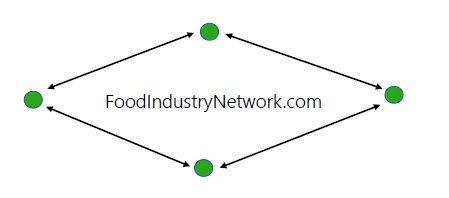Rains swell Mississippi River, US soy exports flow at 4-year high

Chicago | Reuters — Exporters have shipped soybeans from the busiest U.S. grains port at the fastest rate in nearly four years after rain raised water levels in the Mississippi River, government data showed.
Some 60 per cent of U.S. soy exports depart from Gulf Coast terminals that draw supplies from barges traveling south on the Mississippi, the country’s most important grain waterway.
Heavy rainfall across the central United States brought relief to Gulf Coast grain shippers after the Mississippi fell to near-historic lows during peak export season for a third straight year.
Read Also

Bank of Canada says Trump’s proposed tariffs would impact both economies
The Bank of Canada said on Tuesday that if U.S. President-elect Donald Trump follows through on his threat of tariffs on Canada, it would have an impact on both economies and the central bank would incorporate those into its economic forecasts.
Deeper waters are allowing crop handlers to supply exporters with more grain per barge, and to lash more barges together into tows for shipment down the river to the Gulf.
The pickup in barge movement came just as grain merchants are scrambling to move the second-largest U.S. soy crop ever. They want to move inventory before newly harvested Brazilian soy floods the market early next year.
Merchants are also concerned that U.S. President-elect Donald Trump will revive a trade war with top importer China and other key trade partners, raising fears that Beijing and other importers would retaliate by cutting purchases of U.S. grains.
Inspections of soybeans marked for export from Mississippi River terminals at the Gulf topped 1 million metric tons for a fifth consecutive week last week, according to weekly U.S. Department of Agriculture data published on Monday. The last time that happened over five consecutive weeks was in December 2020.
Last week’s tally included 663,272 tons of soybeans on 11 China-bound vessels, USDA data showed.
Those shipments add to a recent surge in Chinese imports of U.S. beans after October imports more than doubled from a year ago, Chinese customs data showed.
“The recent rains … definitely came at the right time to help the grain markets avoid a disaster,” said Matt Herrington, director of commodity research for World Perspectives Inc.
“Had the dryness and falling water levels gone on for another week or two, the markets would have started to see major impacts,” such as elevated barge freight costs, he said.
Instead, barge freight fell sharply this month, making U.S. soybeans more competitive globally, as the heavier loadings reduced the number of barges needed to meet demand.
Still, analysts warn, the immediate benefit to U.S. exports may be short-lived. Farmers in Brazil, the world’s top soybean supplier, are nearly finished planting what is projected to be a record-large harvest that could begin as soon as January.
Brazilian soybeans for shipment in February are currently offered at about $13 per metric ton cheaper than U.S. soybeans at the Gulf, according to LSEG data.
The improvement on the Mississippi River “does help, and this is the peak of our shipping season,” said Rich Nelson, chief strategist for analytical firm Allendale Inc. “It does not change the fact that Brazil has a price discount.”
Source: Farmtario.com

